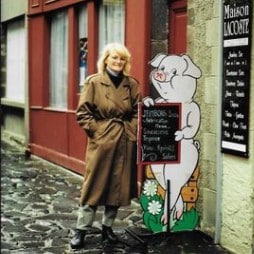
Home » The Bubble: We Need to Be Ambassadors for Purebred Dogs

There has been much discussion in the last year about how the dog show fancy is dwindling. Show entries are down, litter numbers are down, and fewer young people are attracted to the sport. But why?
I have been thinking of how we need to change the narrative; then I read Allan Reznick’s contribution to the SHOWSIGHT April 2025 issue about bringing new people into the fancy. I decided to go back and look at how most of us ended up in the dog show community. The reasons are so varied that there is no simple answer.
So, I went back to where it all starts. What if I were a member of the public and had just decided to buy a dog? If I knew about dog shows, I would probably be aware of The Westminster Kennel Club Dog Show, The National Dog Show, and Crufts, back in the United Kingdom, from seeing them on TV. I might decide to go to one of the big shows, or to a Meet the Breeds event – or I might look for a puppy online. This is where our fictitious puppy buyer will be confronted with a lot of confusing messages.
If they have not yet decided on a breed, they will be tempted by the “listicles” which appear online or in magazines with bold headlines: “Top 10 Breeds for Families,” “The 10 Most Expensive Breeds,” etc. The fact that so many of these listicles come across our screens every week proves one thing: the general public loves dogs. They are interested in different breeds and they soak up whatever information is being provided.
All of it is designed to entice viewers to glance at – and ultimately click on – ads for products or services featured alongside the content. But much of the dog-related information is inaccurate or misleading, because it isn’t crafted by true experts. Instead, it’s often churned out by content writers with little to no understanding of the dog world – or increasingly, by AI.
Back in the 20th century, a similar person would have more accurate resources. There were glossy magazines devoted to dogs on newsstands and at the checkout counter in grocery stores. These magazines were published monthly and appealed to all buyers. There was breed-specific and general information with sidebar ads, and classified ads in the back. Over the past 25 years, most of those magazines have ceased publication. Online advertising today is ephemeral; they are online today and can disappear tomorrow. Ads on social media, such as Facebook, can be a minefield, with many breed-specific groups that are not well moderated and fail to keep out spammers and scammers.
We need to be ambassadors for purebred dogs with every person we meet, realizing that everything we say, online or in person, must be worded in such a way that there is no misunderstanding. For the past 30 years, too many people have adopted a confrontational and divisive attitude. Be willing to talk to people and avoid using animal rights terminology.
An example: a young man from a farm came to me for advice because his sister had a Papillon, and they wanted to know where they could find a stud dog for her. Instead of jumping all over him, telling him why she should not be bred, I asked for more information. Apparently, she was very small, and he wasn’t certain about her registration status, so I told him that would mean no good breeder would accept her for breeding to any of their dogs. If they bred her to a pet dog with an unknown background it could be very dangerous for her, being so small, not knowing the size of dogs behind the stud. I was a little more detailed than this, but his response made it worthwhile. He then said to me: “From what you were saying, we are better off if we do not breed from her and just buy another puppy.”
If I had just sent him away with an aggressive response, he could have gone back to his sister, calling me a snobby show breeder, and bred his Papillon to a pet dog whose photo was pinned to a noticeboard. That was 20 years ago, and the sister could have bought a puppy from a breeder who would have sold them a foundation bitch. Every action has a reaction.
Today, I found an informational site about dogs that explained various breeder definitions, yet “show,” “working,” or “hunting” never came into it, although I think those are the most important. The categories were puppy mill, backyard breeder (BYB), hobby breeder, and professional breeder – with BYB and hobby breeder being pretty much the same! I always thought the term “hobby breeder” was rather dismissive: “just a hobby” – nothing important.
The words that we use, and HOW we use them, are important. How we talk to, and about, each other is also important, especially when trying to encourage newcomers to join the ranks of show goers, and in time, possibly become breeders. Be willing to talk to people who do NOT buy a puppy from you; help them choose a breed that you have never owned if you think it would suit their purpose.
Finally, something to consider that will affect breeds differently…
If you have a low number breed whose registrations have been declining steadily and alarmingly, reconsider the use of Limited Registrations. This type of registration leads to many owners becoming discouraged at the start from even thinking about entering a dog show; many high-quality dogs and bitches are unnecessarily eliminated from the gene pool. The fear of an owner breeding irresponsibly can be mitigated by careful screening and contractual stipulations. The same goes for requiring co-ownerships on all puppies, show or pet, and across the board spay-neuter requirements. In breeds with low entry numbers, would it really be so dreadful if an owner—who has the time, resources, and proper accommodations – were allowed to breed a litter and start showing, even if they’ve never shown a dog before?
